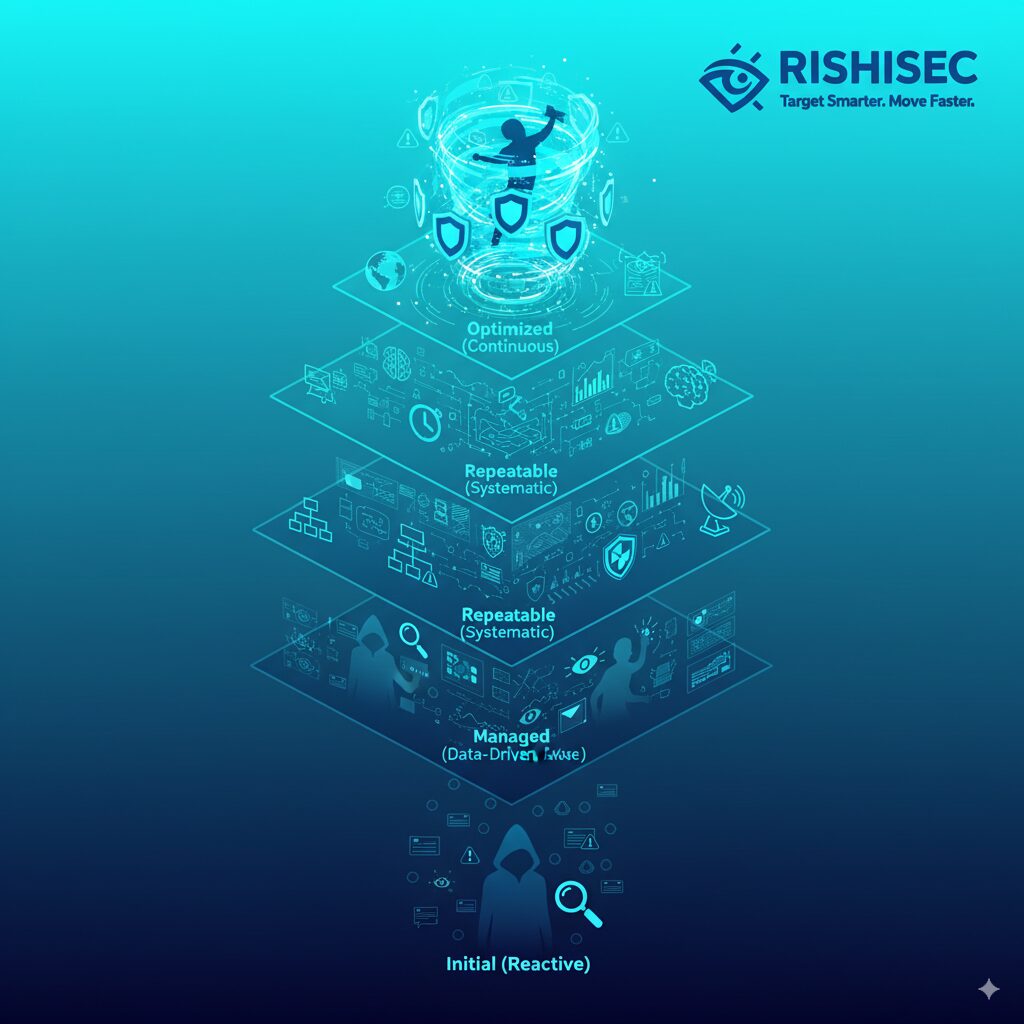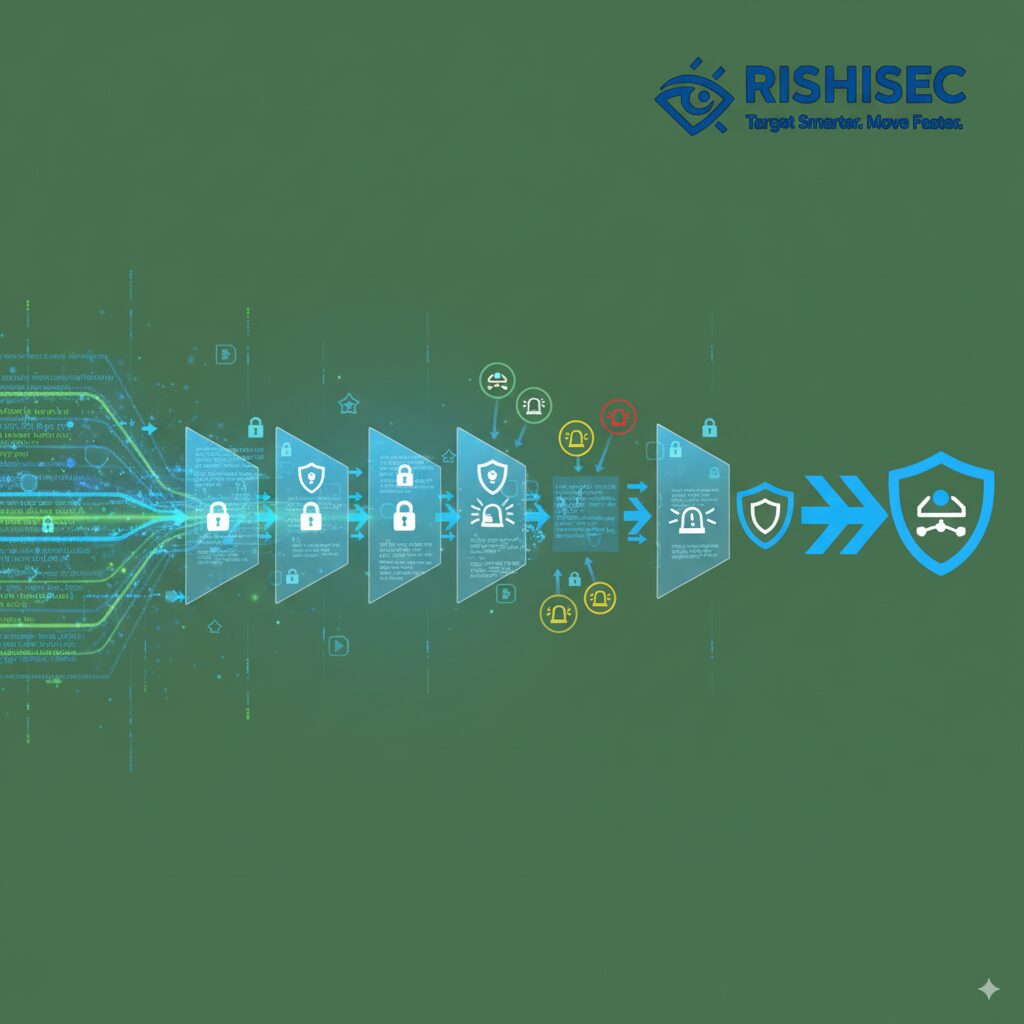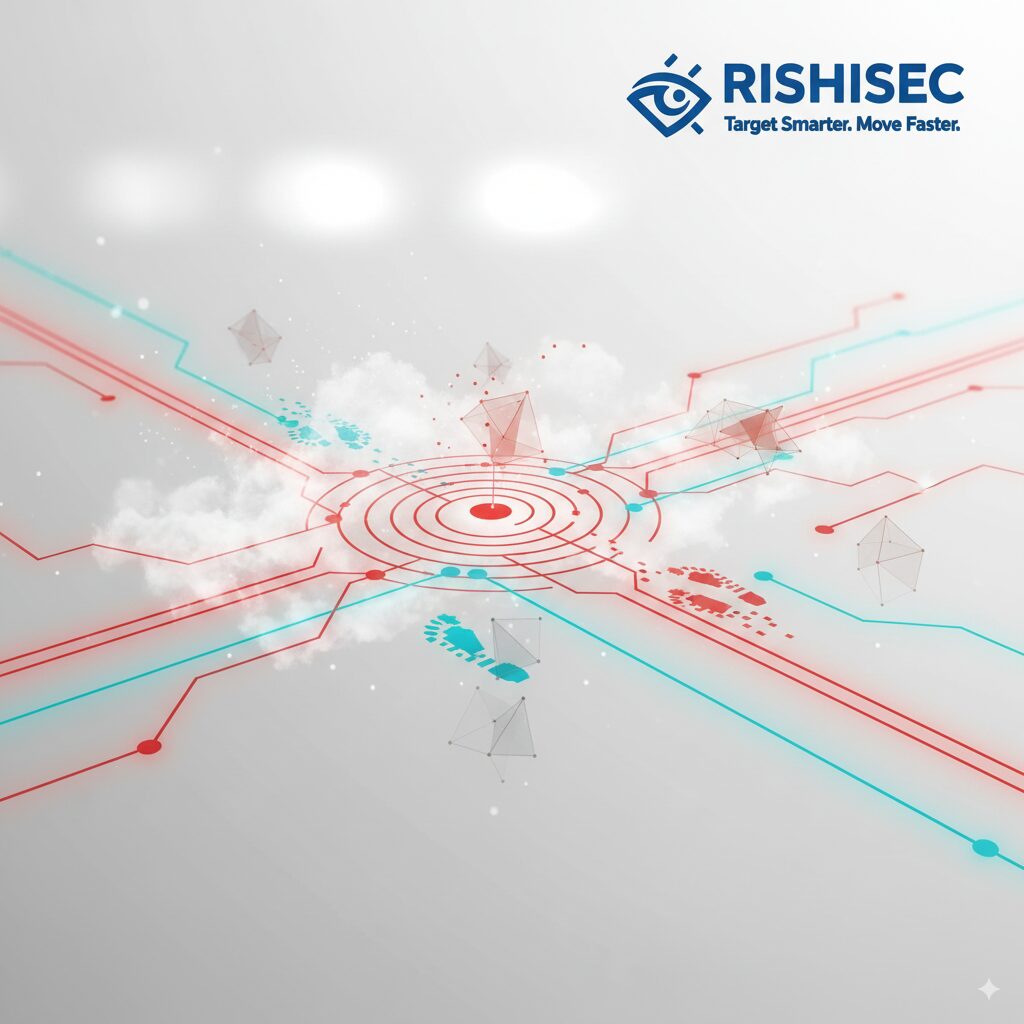When Volkswagen’s emissions scandal broke in 2015, it wiped out $26 billion in market value within days. However, early warning signs existed months earlier in German environmental forums, technical publications, and regulatory filings that most corporate risk teams never monitored. This incident perfectly illustrates why traditional ESG reporting frameworks often miss critical early indicators that OSINT analysts can detect through systematic intelligence gathering.
Environmental, Social, and Governance (ESG) risks have evolved from nice-to-have metrics into material factors that directly impact corporate valuations, regulatory compliance, and operational continuity. Furthermore, corporate OSINT analysts now serve as the early warning system for ESG controversies, detecting signals that traditional risk assessment methods consistently overlook.
Modern corporate risk management requires proactive intelligence capabilities that can identify ESG controversies before they reach mainstream media coverage. Consequently, organizations that implement comprehensive OSINT frameworks for ESG monitoring gain significant competitive advantages while avoiding costly reputation crises.
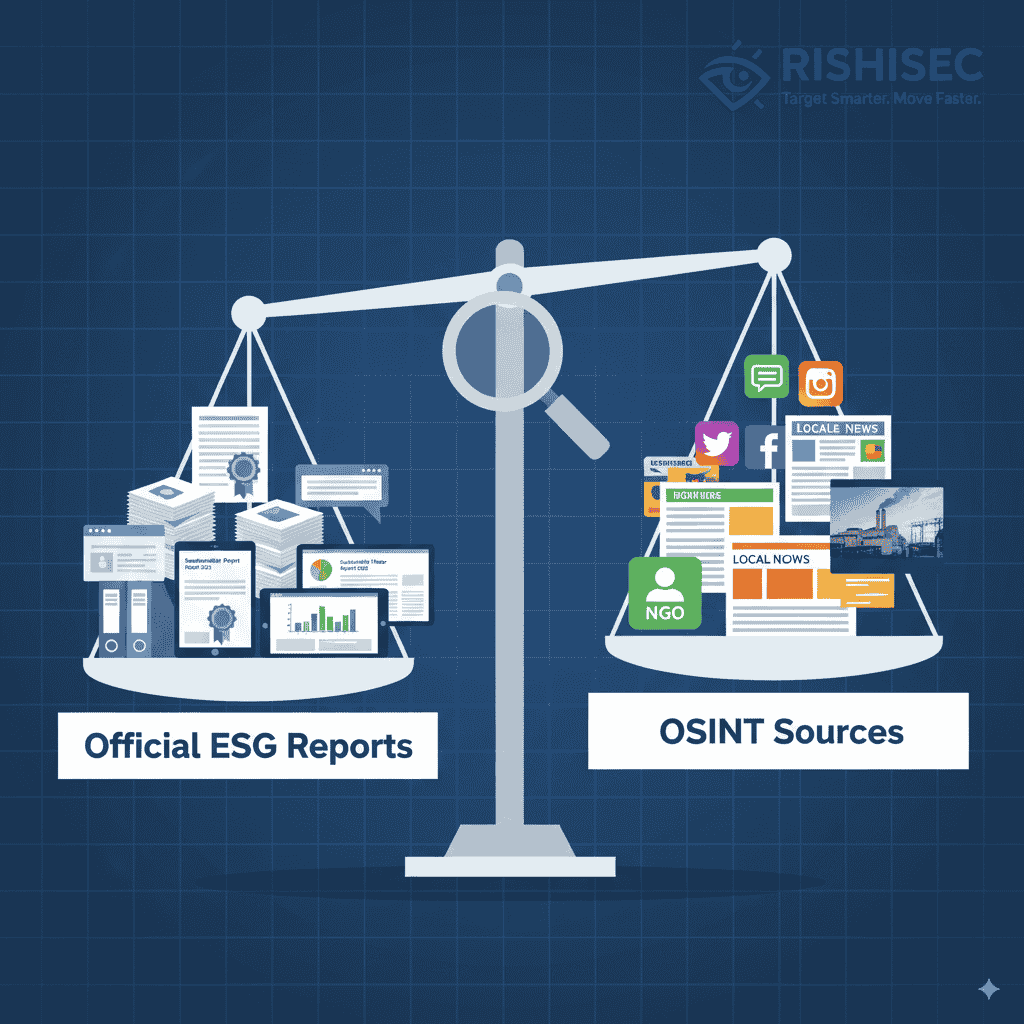
Understanding Corporate ESG Risk Through OSINT Intelligence
ESG risks encompass environmental impacts, social controversies, and governance failures that can trigger regulatory action, consumer boycotts, and investor divestment. Moreover, corporate OSINT provides the analytical framework needed to monitor these risks across multiple information sources and geographic regions.
The Intelligence Gap in Traditional ESG Assessment
Traditional ESG assessment relies heavily on self-reported corporate data, annual sustainability reports, and standardized rating agencies. However, these sources often lag months or years behind actual developments and may not capture emerging controversies or local incidents.
Corporate OSINT analysts bridge this intelligence gap by monitoring real-time information flows from diverse sources including local media, NGO reports, regulatory filings, social media discussions, and geospatial data. Additionally, this approach enables early detection of ESG risks that traditional assessment methods consistently miss.
Intelligence gathering becomes particularly crucial for organizations operating in multiple jurisdictions where language barriers, regulatory differences, and cultural contexts create blind spots in conventional risk assessment processes.
OSINT Sources for Comprehensive ESG Monitoring
Effective corporate OSINT programs utilize multiple information streams to create comprehensive ESG risk pictures. Local and regional media outlets often provide the earliest coverage of environmental incidents, labor disputes, and community conflicts that may affect corporate operations.
Furthermore, NGO reports and advocacy group publications frequently contain detailed analysis of corporate ESG practices months before these issues gain broader attention. Social media platforms provide real-time insights into community sentiment, activist campaigns, and emerging controversies.
Regulatory databases and government filings offer authoritative information about compliance violations, enforcement actions, and legal proceedings that may not appear in corporate communications. Additionally, satellite imagery and geospatial intelligence can independently verify environmental claims and detect unreported incidents.
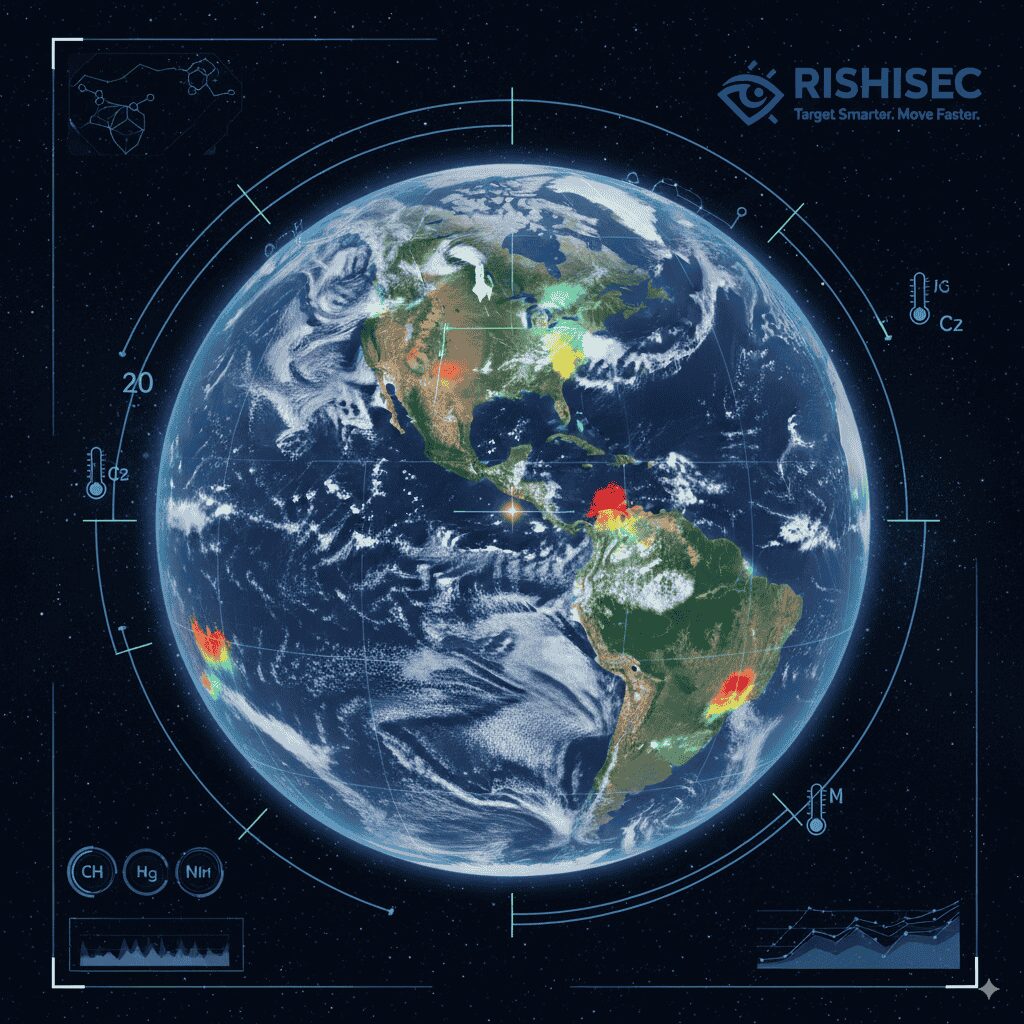
Environmental Risk Detection Through Corporate OSINT
Environmental controversies often begin as localized incidents that escalate into major reputational and financial crises. Therefore, corporate OSINT analysts must develop systematic approaches for monitoring environmental risks across operational footprints and supply chains.
Early Warning Systems for Environmental Incidents
Industrial accidents, pollution events, and environmental violations typically generate initial reports in local media, regulatory filings, or community forums before gaining international attention. Consequently, monitoring these sources enables early detection and rapid response capabilities.
Satellite imagery analysis provides independent verification of environmental claims and can detect unreported incidents such as deforestation, illegal dumping, or industrial emissions. Moreover, temporal analysis of satellite data reveals environmental impact trends that may not be reflected in corporate reporting.
Climate activism and environmental protests often target specific companies or industries, creating reputational risks that can affect market valuations and regulatory treatment. Therefore, monitoring activist communications and protest planning provides valuable early warning capabilities.
Supply Chain Environmental Monitoring
Global supply chains create complex environmental risk exposures that traditional monitoring approaches struggle to address comprehensively. However, corporate OSINT enables continuous monitoring of supplier environmental practices across multiple jurisdictions and languages.
Advanced platforms like Kindi provide automated monitoring and link analysis capabilities that help analysts track environmental risks across complex supply chain networks. These tools can identify connections between suppliers, track environmental incidents, and assess cascading risk impacts across organizational networks.
Additionally, cross-referencing supplier locations with environmental incident databases, regulatory violations, and activist campaigns provides comprehensive risk assessment capabilities that support informed decision-making about supplier relationships.
Social Risk Intelligence in Corporate OSINT Programs
Social risks including labor disputes, human rights violations, and community conflicts can create significant corporate liabilities that require systematic monitoring and early warning systems.
Labor Relations and Workforce Monitoring
Labor strikes, union organizing activities, and workplace safety incidents often generate early signals in local media, worker forums, and social media platforms before escalating into major controversies. Furthermore, systematic monitoring of these sources enables proactive risk management.
Whistleblower platforms and worker advocacy sites frequently contain detailed reports of labor violations, safety concerns, and workplace misconduct that may not appear in official corporate communications. Moreover, these sources often provide specific details that enable targeted investigation and verification efforts.
International labor standards monitoring becomes particularly important for organizations with global operations or supply chains. Consequently, cross-border investigation techniques help analysts track labor practices across multiple jurisdictions and regulatory frameworks.
Human Rights and Community Impact Assessment
Human rights violations and community conflicts associated with corporate operations can trigger regulatory action, investor divestment, and consumer boycotts. Therefore, continuous monitoring of human rights organizations, community groups, and advocacy platforms provides early warning capabilities.
Supply chain human rights monitoring requires sophisticated intelligence gathering that can track practices across multiple tiers of suppliers and subcontractors. Additionally, correlation analysis helps identify patterns and systemic issues that may require comprehensive remediation efforts.
| Risk Category | Primary OSINT Sources | Key Indicators | Escalation Triggers |
|---|---|---|---|
| Environmental | Local media, satellite imagery, regulatory filings | Pollution incidents, permit violations, activist campaigns | Regulatory enforcement, media coverage, investor concern |
| Labor Relations | Worker forums, union communications, local news | Strike activities, safety violations, organizing efforts | Work stoppages, regulatory investigation, public protests |
| Human Rights | NGO reports, advocacy sites, community forums | Violation reports, community complaints, advocacy campaigns | International attention, regulatory action, investor divestment |
| Community Relations | Social media, local media, community platforms | Opposition campaigns, community conflicts, land disputes | Legal challenges, operational disruption, reputational damage |
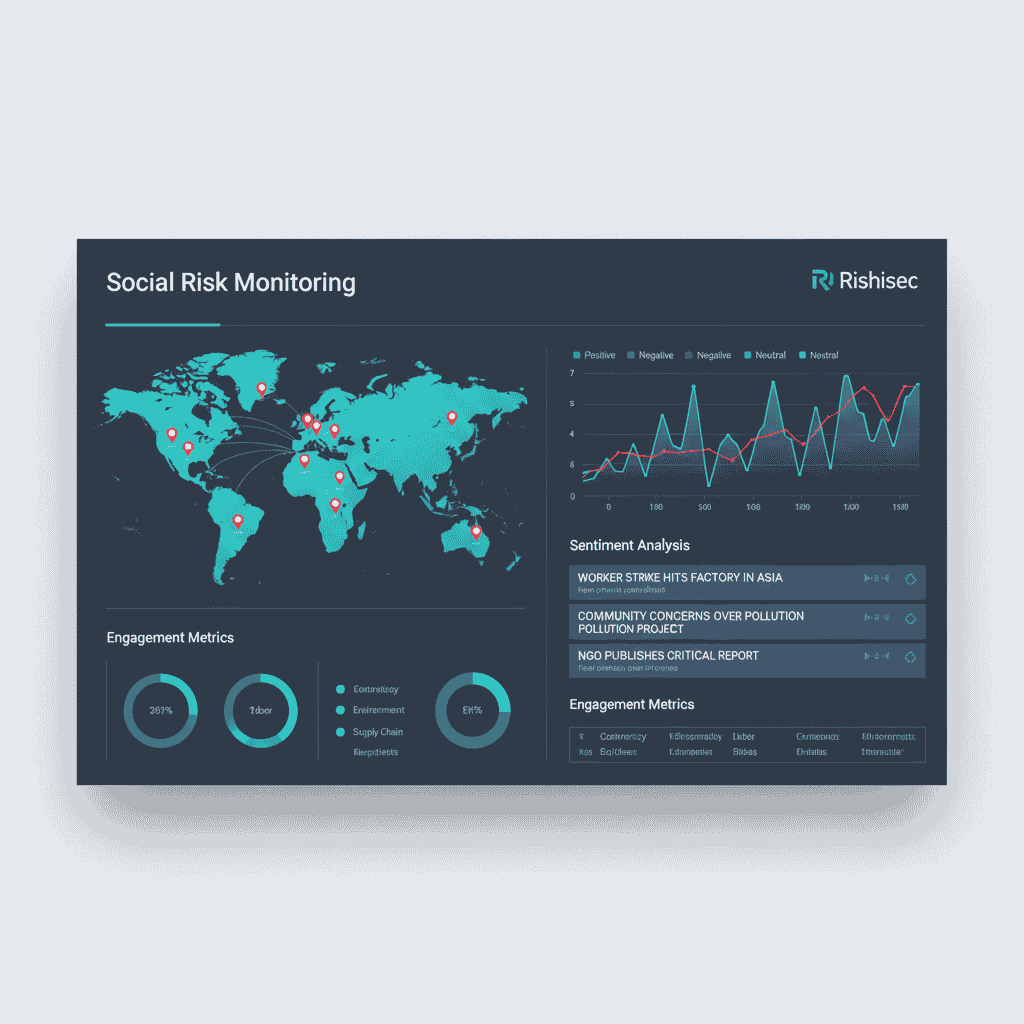
Technical OSINT Methods for Corporate ESG Risk Analysis
Corporate OSINT analysts require sophisticated technical capabilities to effectively monitor ESG risks across multiple languages, jurisdictions, and information sources. Nevertheless, the most successful programs combine automated monitoring with human analytical expertise.
Automated Monitoring and Alert Systems
Comprehensive ESG risk monitoring requires automated systems that can process large volumes of information from diverse sources while maintaining accuracy and relevance. Furthermore, machine learning algorithms help identify patterns and anomalies that human analysts might overlook.
Natural language processing enables monitoring of multilingual sources, ensuring that local incidents and regional controversies don’t escape detection due to language barriers. Additionally, sentiment analysis helps assess the severity and trajectory of developing controversies.
Geospatial analysis integrates location-based intelligence with ESG risk monitoring, enabling correlation of incidents with operational facilities, supply chain locations, and regulatory jurisdictions. Moreover, temporal analysis reveals risk trends and patterns that inform strategic decision-making.
Link Analysis and Network Intelligence
ESG risks often involve complex networks of relationships between corporations, suppliers, regulators, advocacy groups, and community organizations. Consequently, link analysis capabilities help analysts understand these relationships and assess cascading risk impacts.
Network analysis reveals hidden connections between seemingly unrelated incidents, helping analysts identify systemic issues that require comprehensive remediation strategies. Furthermore, relationship mapping supports due diligence processes and vendor risk assessment activities.
Advanced analytics platforms provide visualization capabilities that help analysts communicate complex risk relationships to senior management and board members. Additionally, these tools support collaborative analysis and information sharing across different organizational functions.
Building Corporate ESG OSINT Capabilities
Developing effective ESG OSINT capabilities requires strategic planning, appropriate technology investments, and skilled analytical personnel. However, the most successful programs align intelligence gathering with specific business objectives and risk tolerance levels.
Technology Infrastructure and Platform Selection
Corporate ESG OSINT requires technology platforms that can integrate multiple data sources, provide real-time monitoring capabilities, and support collaborative analysis workflows. Moreover, scalability becomes crucial as organizations expand their monitoring scope and geographic coverage.
Cloud-based platforms offer flexibility and scalability advantages while reducing infrastructure costs and maintenance requirements. Additionally, API integration capabilities enable connection with existing risk management systems and business intelligence platforms.
Security and compliance considerations become particularly important when monitoring sensitive topics and operating in regulated industries. Therefore, platform selection must account for data protection requirements, audit capabilities, and regulatory compliance needs.
Analytical Workforce Development
Effective ESG OSINT requires analysts with diverse skill sets including language capabilities, regional expertise, technical proficiency, and business acumen. Furthermore, continuous training ensures that analysts stay current with evolving methodologies and emerging technologies.
Cross-functional collaboration enhances analytical effectiveness by incorporating perspectives from legal, compliance, operations, and communications teams. Additionally, external partnerships with NGOs, academic institutions, and consulting firms provide specialized expertise and regional insights.
Similar to techniques used in corporate due diligence investigations, ESG OSINT requires systematic approaches that balance thoroughness with efficiency while maintaining analytical objectivity and accuracy.
Integration with Enterprise Risk Management
ESG OSINT capabilities must integrate seamlessly with existing enterprise risk management frameworks to maximize their strategic value and operational effectiveness. Additionally, integration ensures that intelligence insights translate into actionable risk mitigation strategies.
Risk Assessment and Scoring Methodologies
Standardized risk assessment methodologies enable consistent evaluation of ESG risks across different business units, geographic regions, and operational contexts. Furthermore, quantitative scoring systems support prioritization and resource allocation decisions.
Risk severity assessment must account for potential financial impact, regulatory exposure, reputational consequences, and operational disruption. Moreover, temporal factors including likelihood of occurrence and speed of potential escalation influence risk prioritization.
Continuous risk monitoring enables dynamic assessment that reflects changing circumstances and emerging developments. Consequently, automated alert systems notify relevant stakeholders when risk levels exceed predetermined thresholds.
Incident Response and Crisis Management
ESG OSINT capabilities enhance incident response by providing real-time intelligence about developing crises and stakeholder reactions. Additionally, continuous monitoring enables assessment of response effectiveness and identification of emerging secondary risks.
Crisis communication strategies benefit from intelligence about media coverage patterns, stakeholder sentiment, and activist campaign tactics. Furthermore, geographic analysis helps prioritize response efforts and resource allocation across different markets and jurisdictions.
Post-incident analysis utilizes OSINT capabilities to assess reputational impact, identify lessons learned, and improve future risk management approaches. Moreover, this analysis informs updates to risk assessment methodologies and monitoring priorities.
Measuring ESG OSINT Program Effectiveness
Successful ESG OSINT programs require robust measurement frameworks that demonstrate value creation and support continuous improvement efforts. Therefore, metrics must align with organizational objectives while capturing both leading and lagging indicators of program effectiveness.
Key Performance Indicators and Success Metrics
Early warning effectiveness measures how frequently OSINT capabilities detect ESG risks before they appear in mainstream media or regulatory actions. Additionally, lead time metrics quantify the advance notice provided by intelligence gathering efforts.
Risk mitigation impact assesses how OSINT insights contribute to successful risk prevention or crisis management activities. Furthermore, cost avoidance calculations demonstrate the financial value created by proactive risk identification and management.
Operational efficiency metrics evaluate the productivity and accuracy of analytical processes while identifying opportunities for automation and process improvement. Moreover, stakeholder satisfaction surveys assess how effectively intelligence products meet user needs and support decision-making.
Continuous Improvement and Program Evolution
Regular program reviews evaluate monitoring coverage, analytical methodologies, and technology platform performance to identify enhancement opportunities. Additionally, feedback from business stakeholders informs priorities and resource allocation decisions.
Emerging risk identification ensures that monitoring capabilities evolve to address new ESG challenges and regulatory requirements. Furthermore, technology advancement evaluations help organizations adopt new capabilities that improve analytical effectiveness.
Benchmarking against industry best practices and peer organizations provides insights into relative program maturity and identifies areas for improvement. Moreover, professional development programs ensure that analytical personnel maintain cutting-edge skills and knowledge.
Future Trends in Corporate ESG OSINT
The corporate ESG OSINT landscape continues evolving rapidly as regulatory requirements intensify, stakeholder expectations increase, and technology capabilities advance. Consequently, organizations must anticipate future developments and adapt their capabilities accordingly.
Artificial intelligence and machine learning technologies will increasingly automate routine monitoring tasks while enabling more sophisticated pattern recognition and predictive analysis. Additionally, natural language processing improvements will enhance multilingual monitoring capabilities and sentiment analysis accuracy.
Regulatory disclosure requirements will likely expand to include more detailed ESG risk reporting, creating additional compliance obligations and potential liability exposure. Furthermore, investor demands for ESG transparency will continue intensifying across all industry sectors.
Integration with Internet of Things sensors and real-time environmental monitoring systems will provide more immediate and accurate ESG risk intelligence. Moreover, blockchain technology may enable more transparent and verifiable ESG reporting throughout supply chains.
Corporate OSINT analysts who develop comprehensive ESG risk monitoring capabilities position their organizations for success in an increasingly complex and regulated business environment. The ability to detect and respond to ESG controversies before they escalate into major crises represents a critical competitive advantage that directly impacts financial performance and stakeholder relationships.
Want to strengthen your OSINT skills and corporate risk analysis capabilities? Check out our OSINT courses for practical, hands-on training. Additionally, explore Kindi to discover how AI-powered OSINT automation can enhance your ESG risk monitoring while providing the comprehensive analysis and collaboration features your organization needs to stay ahead of emerging controversies.
FAQ
What makes OSINT more effective than traditional ESG assessment methods?
OSINT provides real-time monitoring of diverse information sources including local media, NGO reports, and social platforms that traditional ESG assessments often miss. This enables early detection of risks months before they appear in official corporate reporting or rating agency assessments.
How can organizations measure the ROI of ESG OSINT programs?
ROI measurement includes cost avoidance from prevented crises, reduced regulatory penalties, improved investor relations, and enhanced operational efficiency. Organizations typically track early warning lead times, risk mitigation success rates, and stakeholder satisfaction metrics to demonstrate program value.
What are the biggest challenges in implementing corporate ESG OSINT capabilities?
Primary challenges include managing information overload, ensuring source credibility, overcoming language barriers, integrating diverse data sources, and developing skilled analytical personnel. Additionally, organizations must balance comprehensive monitoring with privacy considerations and ethical intelligence gathering practices.
How do ESG OSINT capabilities integrate with existing risk management systems?
Integration typically involves API connections with risk management platforms, standardized risk scoring methodologies, automated alert systems, and reporting workflows that feed intelligence insights into existing governance structures and decision-making processes.
What skills do analysts need for effective ESG OSINT work?
Essential skills include multilingual capabilities, regional expertise, technical proficiency with OSINT tools, understanding of ESG frameworks, analytical thinking, and business acumen. Additionally, analysts need knowledge of relevant regulatory requirements and stakeholder dynamics in their organization’s operating environment.


